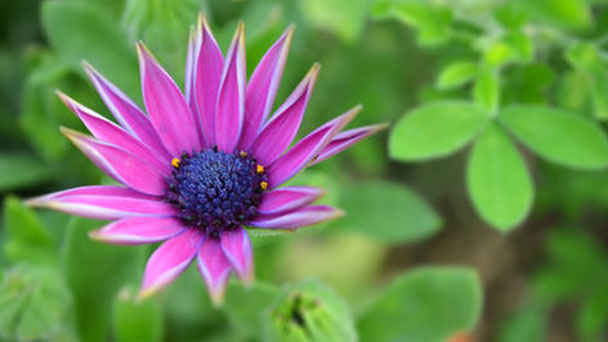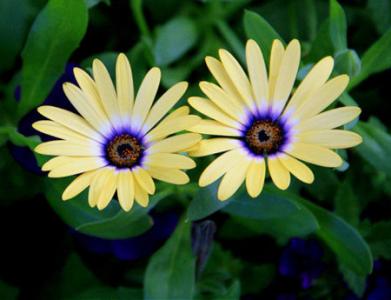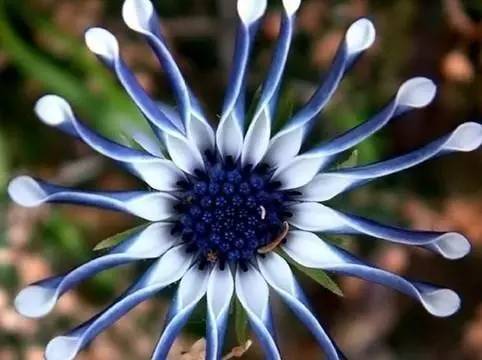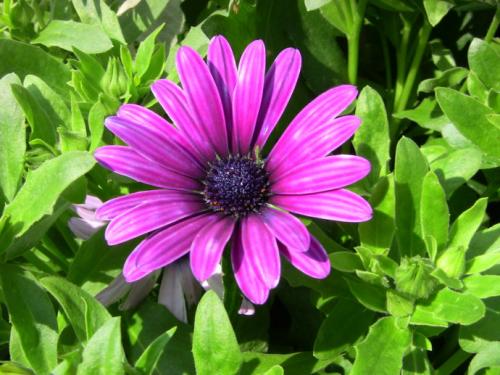African daisies profile
Written by Maggie
Mar 11 2021

African daisies, scientific name Osteospermum, are a family of about 50 species, all of which are native to Africa, 35 of which are found in Southern Africa and Arabia. They are semi-hardy plants, so wild African daisies cannot withstand the winter.
The alternate leaves of the african daisies are green, but some species have beautiful markings. The leaves are pointed and lance shaped, with intact margins, but serrated in hardy species.
African daisies picture
African daisies morphological characteristics
African daisies (Osteospermum) are 20 -- 50cm tall, erect or creeping, typically bask-shaped, with a circular disk in the center surrounded by radiate, sometimes spoon-shaped, lingulate flowers, with different colors of blue, yellow, and purple in the center. The lingulate flowers are white, milky white, yellow, pink, purple, and purple, sometimes showing different colors on both sides. Flowering period of African daisies can last from spring to summer, or even into autumn if the weather permits.
African daisies (Osteospermum) have the characteristics of different flower shapes, colorful flower colors, compact and short plant types, and the flowering period lasting several months, etc. Once it was discovered, it attracted the attention of people in the European and American garden circles and was quickly applied in gardens. African daisies have been widely used as potted and ground grown flowers in Europe, the United States and other countries. Many European countries have carried out large-scale commercial production. At the same time, many new varieties have been bred through interspecific and interspecies hybridization.
African daisies growing environment
African daisies (Osteospermum) are well suited to temperate climates, but the resistance of different varieties varies greatly and many varieties on the market are not frost resistant.

African daisies growing methods
African daisies (Osteospermum) are sun tolerant, drought tolerant and prefer loose, fertile sandy loam. African daisies are strongly branched, without cutting the heart.
African daisies are easy to grow and manage with fewer pests and diseases. Common insect pest is aphid, usable 80% dichlorvos emulsion 800~1000 times liquid or 1000 times liquid of net spray plant undertakes prevention and control.
African daisies (Osteospermum) common disease is a rotting root, mostly caused by too much watering. African daisies can be prevented by proper water control and keeping the substrate slightly wet and dry. Once the root is found to be damaged, it should be replaced in time to update the substrate. The second is yellow leaves, yellow leaves caused by the reasons and prevention measures are as follows: (1) yellow leaves mainly young leaves, often appear spots (the reason for the substrate pH is too low, resulting in iron poisoning), can be poured through the appropriate concentration of limestone water to adjust the substrate pH value; (2) When the temperature of seedling is too low, the night temperature can be appropriately raised; (3) The application of nitrogen fertilizer is insufficient, and the amount of nitrogen fertilizer can be increased appropriately.
African daisies (Osteospermum) are colorful. They can not only be used as potted flowers for viewing on the balcony table, but also as garden flowers in early spring and early summer. African daisies can be arranged in flower beds and flower borders by group planting. Planting, with the green grass and stone, can reflect its harmonious natural beauty. A few creeping species can be cultivated as ground cover.
African daisies propagation methods
African daisies (Osteospermum) flowers are very common in nurseries. Propagation methods are sowing propagation and cuttage propagation, mainly to cuttage seedling.
Seed seeding: in autumn and winter or spring, on demand or acupressure sowing. Because the seeds of African daisies are mostly hybrid seeds, the seeds are easily differentiated and show different colors and shapes.
Cuttage propagation: generally in autumn and winter. Breeding in autumn and winter should be carried out in greenhouses or protected areas to avoid frost. Many hybrids and cultivars have been developed. Yellow cultivars usually have yellow or pale white centers. One of the most popular African daisies (Osteospermum) is the Wheel Chrysanthemum, which has spoon-shaped petals in purple to lavender blue and blue discoid flowers. African daisies is an evergreen plant, about 40 centimeters high. At night or in cold weather, the petals fold away. African daisies are sun tolerant, drought tolerant and prefer loose, fertile sandy loam. African daisies are strongly branched, without cutting the heart.
African daisies main value
African daisies (Osteospermum) are colorful. They can not only be used as potted flowers for viewing on the balcony table, but also as garden flowers in early spring and early summer. They can be arranged in flower beds and flower borders by group planting. Planting, with the green grass and stone, can reflect its harmonious natural beauty. A few creeping species can be cultivated as ground cover.

Latest Updated
- Benefits of Bugleweed - 7 Science-backed Health Benefits
- Bugleweed Dangers & Side Effects - Is It Poisonous?
- How to Plant Evergreen Trees - What You Should Know
- When to Plant Evergreens - Grow Guide for Evergreen Trees
- 12 Wonderful Evergreen Shrubs for Your Garden
- 12 Popular Evergreen Plants with Pictures for Beginners
- When And How To Prune A Lilac Bush Like a Pro
- How to Grow & Care for Lilac Vine (Hardenbergia Violacea)
- Japanese Lilac Tree (Syringa Reticulata) Care & Propagation Guide
- Shumard Oak Pros and Cons - What to Know
Popular Articles
- Winter maintenance of Antirrhinum Majus
- How to Grow Terminalia Mantaly Tree
- How to Grow and Care for Crossostephium Chinense
- How to grow Antirrhinum Majus in spring
- Peristeria Elata (Dove Orchid) Profile: Info & Care Guide
- Underwatered Snake Plant (Sansevieria Trifasciata) - Signs And How To Fix
- How to Care for Brazilian Jasmine Plant (Mandevilla Sanderi)
- How to Grow & Care for Graptopetalum Purple Delight in Summer
- Rosa Chinensis (China Rose): Plant Growing & Care Tips
- How to Care for Baby Sun Rose (Aptenia Cordifolia)
